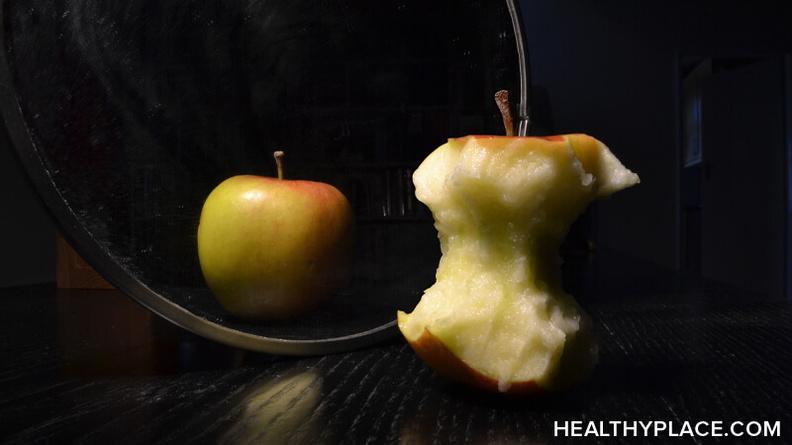Body Dysmorphia in Binge Eating Disorder (BED)
 Body dysmorphia and binge eating disorder (BED) often go hand in hand. Body dysmorphia is characterized by having an obsessive preoccupation with one's appearance as well as being unable to see one's body the way it is in reality (Body Dysmorphic Disorder (BDD) Signs, Symptoms and Causes). Many times in binge eating disorder, body dysmorphia causes us to see ourselves as much larger than we really are. Finding awareness of these tendencies is a big step toward wellness from binge eating disorder.
Body dysmorphia and binge eating disorder (BED) often go hand in hand. Body dysmorphia is characterized by having an obsessive preoccupation with one's appearance as well as being unable to see one's body the way it is in reality (Body Dysmorphic Disorder (BDD) Signs, Symptoms and Causes). Many times in binge eating disorder, body dysmorphia causes us to see ourselves as much larger than we really are. Finding awareness of these tendencies is a big step toward wellness from binge eating disorder.
Body Dysmorphia in BED and Self-Hatred
I have experienced body dysmorphia in BED. In fact, I have gone through phases of all eating disorder behaviors. One common thread is that I was never able to see my body as it really was. I was delusional, seeing a person much larger than was really staring back at me in the mirror.
This brought me anxiety, self-hatred, and shame. These feelings only led me deeper into my binge cycle because I was, at the time, unable to cope with the intensity of these emotions. After each binge, the cycle would continue. I would look at myself completely believing that I had gained a substantial amount of weight and then binge again from the feelings of self-disgust.
Awareness Ends Body Dysmorphia in BED
Freeing yourself from the symptom of body dysmorphia in binge eating disorder (or any eating disorder) is not an easy thing to do. I'll admit that I still have days where I have a difficult time seeing my body as it truly is.
The first step toward freedom is awareness -- the awareness that you are not able to look at yourself and see what the rest of the world does. In knowing this, we gain the ability to combat the negative thoughts that run rampant every time we look in the mirror. When the thoughts arrive, we can say, "I know I am seeing what I see because I feel self-hatred." (or whatever emotion you are experiencing). In doing this, we take some power away from our thoughts.
Something that helped me immensely was my ongoing work with my dance movement therapist. Through movement, we are able to become one with our body. When we find a connection with ourselves, we find the ability to feel at home in this body we live in as well as see it for what it truly is instead of how binge eating disorder causes us to view it.
Body dysmorphia in binge eating disorder tells you your body can change after one binge. Remember, it is impossible for your body to completely change overnight. One binge will not cause excessive weight gain. Try your best to combat these harmful body image thoughts. Experiment with some simple movement at home and see if this helps to ground yourself inside your body.
Keep working. Stay strong. You can make it through these tough times.
APA Reference
Bialka, G.
(2018, April 1). Body Dysmorphia in Binge Eating Disorder (BED), HealthyPlace. Retrieved
on 2024, April 18 from https://www.healthyplace.com/blogs/bingeeatingrecovery/2018/04/body-dysmorphia-in-binge-eating-disorder
Author: Grace Bialka
Beautiful read. I love the idea of using dance and movement as a way of truly getting connected with the body and moving past hurtful behavioral patterns that come up with body dysmorphia and ED. Thank you for sharing.